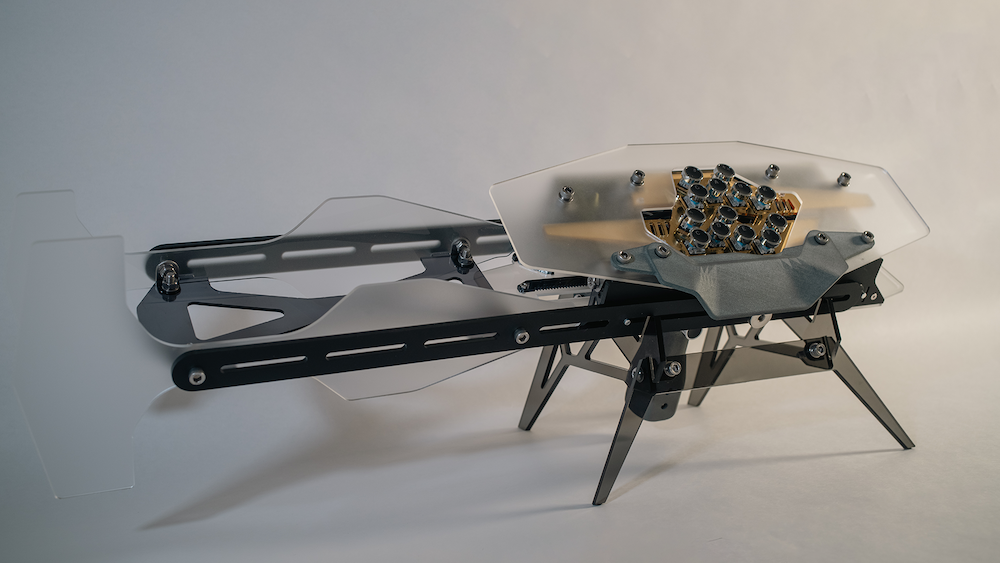

Every year since 2009, a handful of artists, engineers, musicians, and hobbyists from around the world arrive in Atlanta, Georgia, with one-of-a-kind instruments in tow. Sitars made from golf clubs, pianos generating otherworldly tones from electromagnets, and infinitely customizable miniature synthesizers—all have taken home prizes at Georgia Tech’s Guthman Musical Instrument Competition. As university gears up to showcase 2024’s ten finalists, Jason Freeman is excited, to say the least. “It’s one of the favorite parts of my job,” he tells PopSci.
Although the School of Music has been a part of the university since its marching band formed in 1908, the world of instrumentation has changed dramatically over the ensuing century. Freeman, professor and chair of Georgia Tech’s School of Music and the competition’s director, as well as his fellow organizers saw an opportunity to draw attention to the ever-evolving world of music technology, as well as human beings’ immense creative capacities using increasingly accessible tools.

Freeman says they receive between 50 and 100 open call submissions each year from creators residing everywhere from Turkey, to Germany, to Spain, to California. Ten finalists converge on campus in the spring to demonstrate their inventions in front of a panel of judges, as well as a packed house. One of the school’s most public activities, the Guthman Competition hosts as many as 1,500 visitors during the two-day event, including K-12 students and industry professionals alike.
In early March, attendees will be able to see (and hear) finalist entries such as Jean-François Laporte’s Babel Table, an instrument created for a children’s project utilizing multiple arrays of latex membranes and compressed air flows to produce everything from percussive tones to electronic-esque chirping notes. Pippa Kelmenson’s Bone Conductive Instrument (BCI), which emits sound signals to vibrate individual body resonant frequencies to aid hard-of-hearing users. Playmodes’ Sonògraf, meanwhile, uses camera-enabled machine learning to transform a user’s handwritten drawings and collages into audible melodies. Freeman admits it can be difficult to pick a winner with such a wide variety of finalists, and likens the process to comparing apples and oranges.

“One may be a mobile app, another may be a reimagination of a traditional instrument, while another may be a device designed for deaf or hard-of-hearing musicians,” he says. “We celebrate this whole spectrum of practices with the competition.”
Like the instruments on display, Freeman says the competition continues to evolve, as well. Initially, organizers focused on much narrower criteria, namely the potential for an instrument to go on to achieve widespread commercial success.

“While some winners have certainly achieved this goal, many never intended to mass produce their creations,” he explains. “They were creating something that has a very specific and unique need. Sometimes for a musician of one, and sometimes for a very specific field of practice.”

Generally speaking, judges now evaluate finalists on three central criteria: design, innovation, and musicality, i.e. an instrument’s potential for creative and melodic expression. Most submissions involve some degree of electronics (see: Teenage Engineering’s OP-1 mini synthesizer) although many remain wholly acoustic creations. Reimaginings of traditional instruments are also common, such as 2014’s first-place winner—the Adjustable Microtonal Guitar from Turkish musician, Tolgahan Çoğulu, which allows players to customize the fretboard for non-western melodies. Another common theme is using electromagnets to generate sound, as seen in 2024 finalist Nicola Privato’s Thales sensors.
Another major theme in recent years is an increasing emphasis on using instruments in educational contexts, such as ways students can learn to play music while avoiding some of the common, early phase pain points and frustrations. Another is increasing accessibility for individuals with different needs, such as a physical disability preventing them from playing a particular instrument. These approaches are some of Freeman’s personal favorites.
“There’s still tremendous potential for technology that helps us become better at traditional instruments, but also retrofits or expands or adapts practices from those instruments to help people be creative and make music,” he says.

Like the instruments on display, Freeman says the competition continues to evolve, as well. Tools to create instruments are becoming more accessible and affordable, as well as easier to utilize. When asked about the most recent technological buzzwords and their (potentially problematic) implications, however, Freeman seems unphased. If anything, it’s old news.
“Machine learning and AI have really been long important in this space in a variety of ways,” he says.
But as innovative as they can be, such technologies are not an instant recipe for success. Freeman cautions that designers often mistakenly believe instrument aspects can be mapped on a one-to-one ratio—tone is one sensor, physical intensity to another, volume to yet another.
“That’s not how real musical instruments work. Real musical instruments are nonlinear systems that have a huge amount of unpredictability built into them.”
